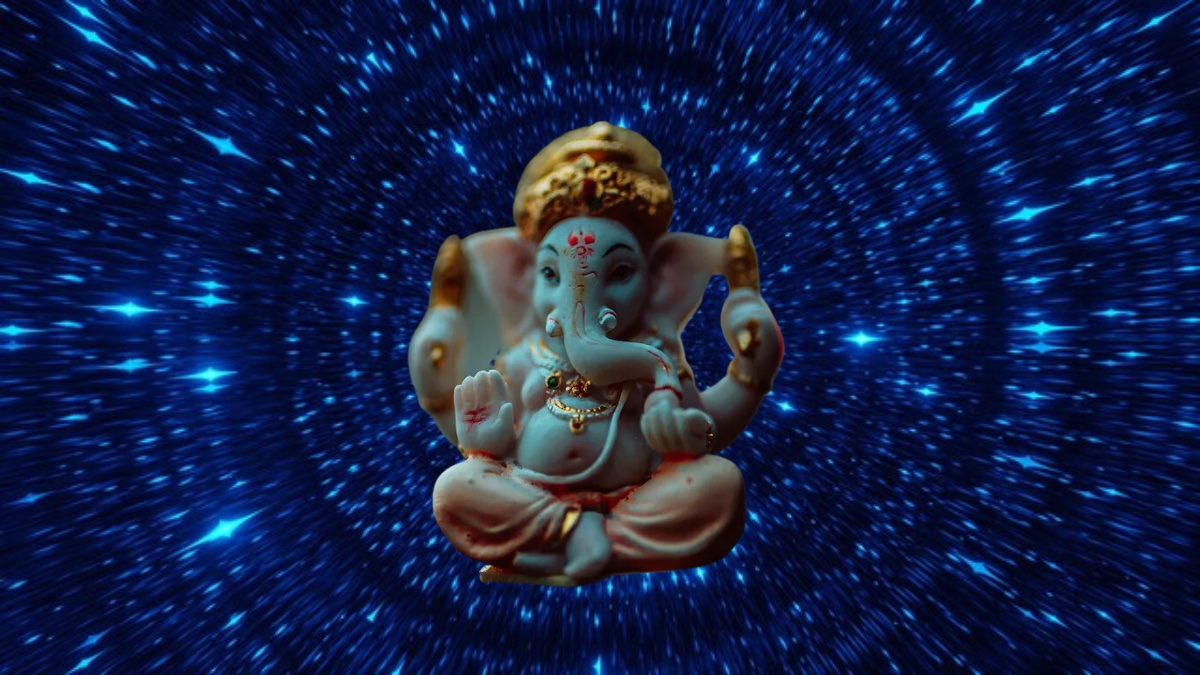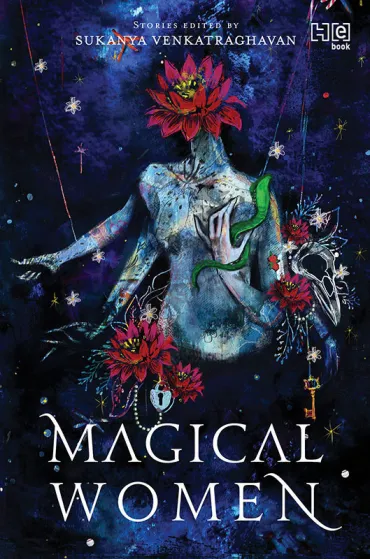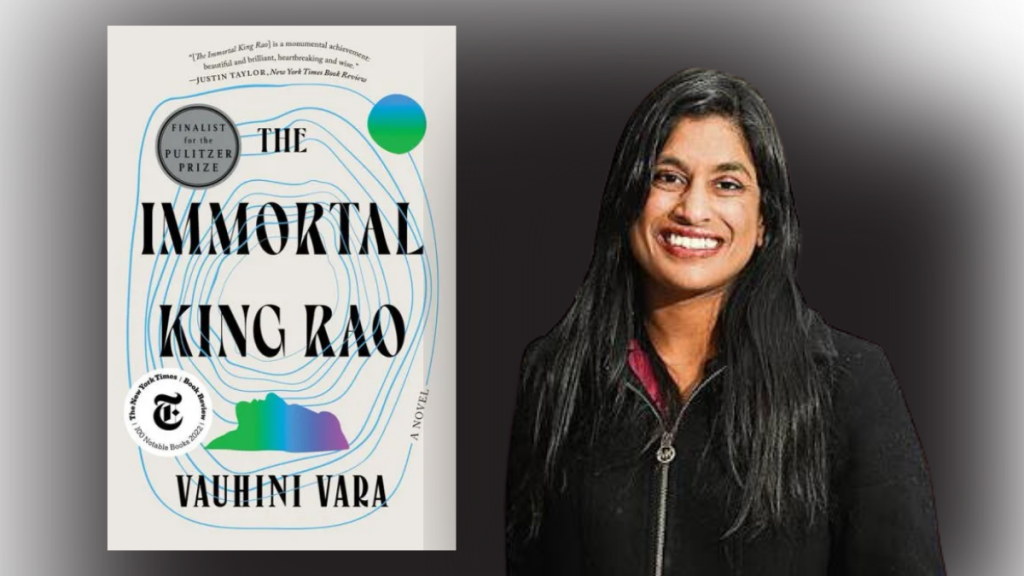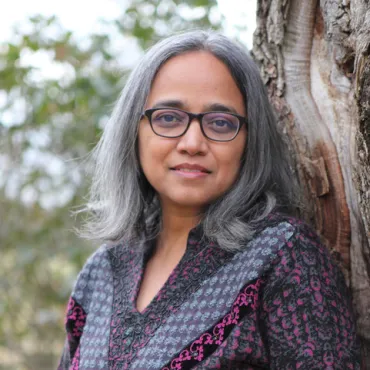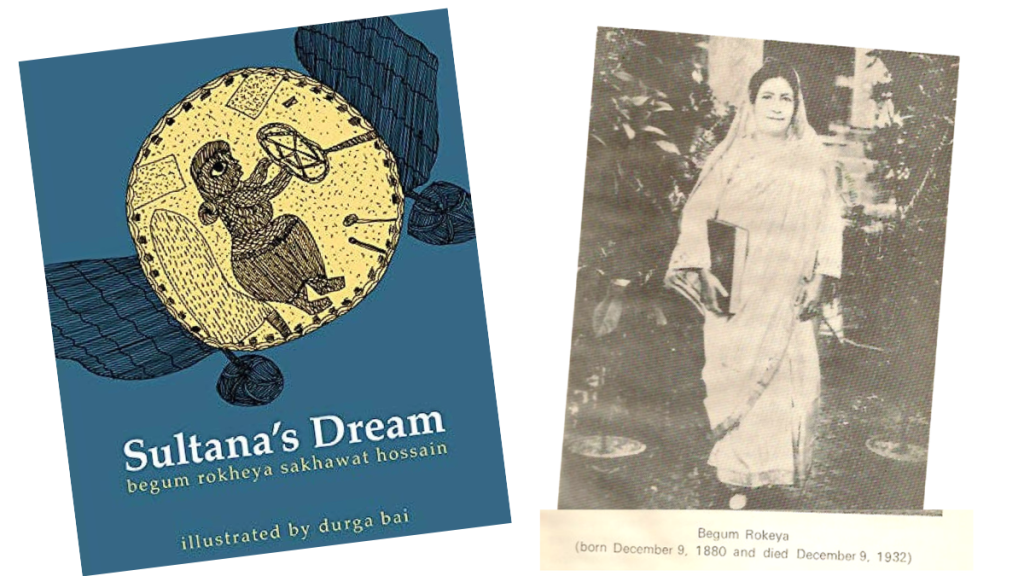Till the late twentieth century, science fiction (SF) in India was for the select few. “The lack of easy access to science education and research and the exclusion of women and subaltern groups from scientific endeavor” limited its spread, wrote Ritwick Bhattacharjee, assistant professor of literature at the University of Delhi, in his book Science Fiction in India: Parallel Worlds and Postcolonial Paradigms.
The onset of the digital revolution with its technological innovations and app-driven culture overcame some of those limitations. Smartphones democratized access to technology, enabling a plurality of voices to emerge, noted Manjula Padmanabhan in the foreword to The Gollancz Book of South Asian Science Fiction. Indeed, in 2016, about a quarter of the population was using smartphones, which doubled to 53% by 2020.
A slate of new science fiction spaces
Presently, more and more writers are experimenting with the genre. While only a handful of SF novels have thus far been traditionally published in India every year, a slate of new science and speculative fiction domains is giving space to new voices and ideas, like the magazine Mithila Review and the feminist collection Magical Women (2019).
Vandana Singh, Anil Menon, Samit Basu, Mimi Mondal, and Gautam Bhatia, among others, headline discussions on Indian SF today. Their storylines expose the chaos, upheavals, and power structures of an ethnically, religious, and linguistically diverse India.
Unique to Indian SF is the manner in which mythology and folklore undergird much of the storytelling. From the Vedas and Puranas to the epics Ramayana and Mahabharata, historical plots continue to have relevance in Indian SF. As a result, science fiction from India is emerging as a singular genre rich with its own vernacular lexicon.
Decoding Mythology and Folklore
Kalpavigyan — kalpa is the cycle of creation and destruction of the universe as well as Vedic practice; and vigyan refers to knowledge or intelligence — is the term used by some Indian science fiction writers to depict mythology as the source of science. Most academics agree that Indian science fiction has deep roots in Indian mythology. Bodhisattva Chattopadhyay, associate professor of culture studies in Oslo, argues that kalpavigyan “articulates truths in sources that have been discarded by modern knowledge,” and that myth is used to reframe science.
Recognizing the hold of Hindu deities on the Indian imagination, the Indian publishing industry is quick to offer contracts to authors whose fiction plots mine mythological characters or retell the classics, (Devdutt Pattanaik, Chitra Banerjee Divakaruni, Amish Tripathi, Ananda Neelakantan, Ashwin Sanghi, etc). However, SF writers go beyond retelling to build scenarios that embed Hindu characters and philosophy into a science, technology, and conflict-filled universe.
Superheroes, kuldavis & God
Appupen’s The Snake and the Lotus, one of a four-part superhero comic series about the Halahala universe uses mythology to hold up a mirror to the foibles of the human race. Halahala is the deadly poison created when the devas and asuras churned the Ocean of Milk to create amrita, the nectar of immortality.
Capturing the angst of a devadasi, a temple dancer, who is trapped in a palace and forced to perform throughout her life, Mimi Mondal’s novelette His Footsteps Through Darkness and Light, evokes jinns and kuldavis, genies and spirits. The story uses folklore to build a new complex world filled with past conundrums and current conflicts.
What is particularly interesting is how science fiction writers handle the subject of gods and goddesses.
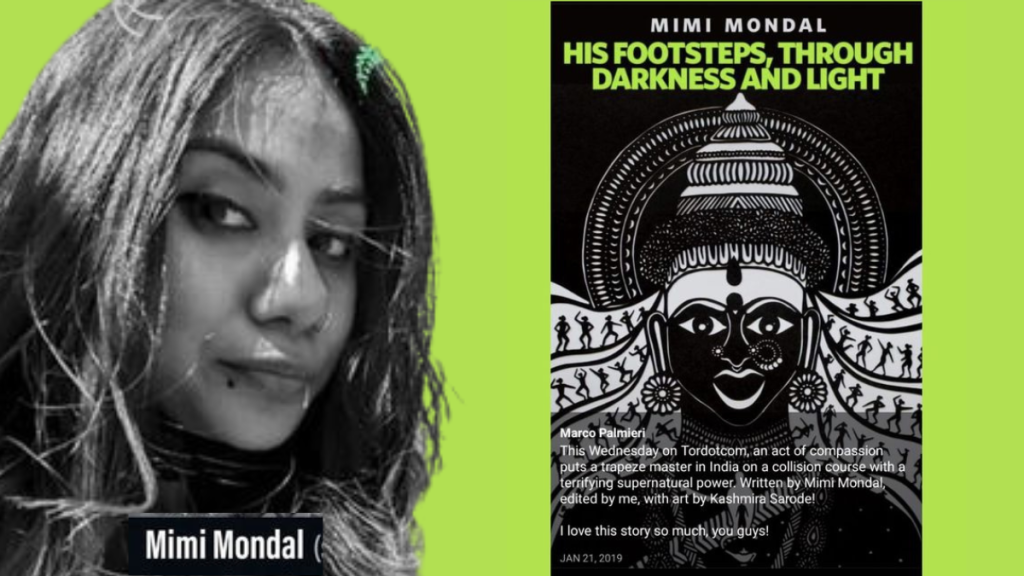
The physicist and speculative (science and fantasy) fiction writer Vandana Singh says that she avoids stories probing the presence or absence of god “because positing God stops most of the interesting questions. And I’d rather engage with the questions.”
Anil Menon’s short story Invisible Hand swaps the roles of Shiva the destroyer and Vishnu the preserver, leading to questions about who created God. And in the anthology Breaking the Bow, Sita from the Ramayana is reimagined combating the misogyny and male orientation of the epic.
These narratives are subversive and force the reader to stay rooted in these deeply valued mythological stories and yet transcend them by placing familiar narratives into the chaos and progress of today’s India.
Myth and Tech
In the intersection of mythology and technology, Indian SF stories find thrilling momentum. Sita’s Descent, by Indrapramit Das, one of the stories in “Breaking the Bow,” constructs Rama, Ravana, and Sita with AI interfaces and nanotechnology, and it is Sita who emerges as the dominant power.
Vauhini Vara’s SF debut The Immortal King Rao — a finalist for the Pulitzer in 2023 is a 370-page eco-socio-techno-political family saga. Athena, the protagonist, from a Dalit Indian family, is injected with genetic code that gives her access to the Internet and her father’s memories. She is imprisoned and awaiting judgment by an algorithm while fighting the climate-driven extinction of human civilization. The New York Times described it as “science fictional only insofar as it involves some fictional science.”
The reviewer missed the point. This is exactly how SF writers with roots in India conceive of the genre: as the hybridization of ideas around technology, climate change, and science to make sense of the caste and creed-ridden politics of India.
What’s Caste Got To Do With It?
Talking about caste, SF author Anil Menon pointed out in an essay that “educated Hindus prefer to deny the relevance of the caste system.” It’s always the more privileged castes that fail to see that the system is “appallingly robust,” he wrote.
SF writers are actively engaged with removing these blinders. Vara, a Dalit author herself, presents Dalit protagonists as innovators and entrepreneurs, instead of victims of oppression in The Immortal King Rao.
The novel City Inside by Samit Basu, too, sets the backstory with the protests and government crackdowns leading up to the Citizenship Amendment Act of 2019, which, under the pretext of legitimizing undocumented immigrants, disenfranchised Dalits, Adivasis, and Muslims. To prove citizenship, all residents were required to provide documentation, which was next to impossible to procure for the indigent and underprivileged. Of the 1.9 million people excluded from the National Citizenship Registry in Assam, 1.2 million were Adivasis and Dalits and the rest were Muslims.
Basu said his book came from his own concerns about facing “daily apocalypses, on an ever-shifting cycle,” in India. He thought he wrote the book to capture reality, but the everyday messes of his life translated to the reader’s experience of disillusion. These messes include Delhi’s expanding population, overbearing heat, the intemperance of social media, and government surveillance. He admitted to being surprised by the responses of readers who called it dystopian. “Dystopia is a function of distance,” he remarked, implying that what he wrote had the intimacy of lived experiences.
A State of Polycrisis
Like Basu and Vara, Vandana Singh’s stories and novels often negotiate a state of polycrisis – human-induced climate change fueling social and political tumult – with a justice and equity lens.
Given that she was a 2021 Climate Imagination Fellow at Arizona State’s Center for Science and the Imagination, many of her stories feature weather-related disasters that have ravaged India of late.
The Climate Reality Project found that temperatures in India rose by 1.3 degrees Fahrenheit (0.7 degrees Celsius) from 1901 to 2018, nearing the IPCC threshold of 1.5 degrees of warming beyond which catastrophic climate change becomes unavoidable. March 2022 was the hottest March on record with temperatures rising to 115 degrees in some areas, causing hundreds of deaths. Deluges and flooding due to extreme rainfall events also caused death and damage across the country. Last fall, torrential rain paralyzed Bengaluru, leaving many residents trapped in their homes for days.
Tribal cultures offer knowledge systems
In Singh’s story Indra’s Web, an energy grid called the “Suryanet” helps displaced refugees from drowned villages in Bangladesh refurbish a refugee slum called Ashapur into something more habitable.
Singh relies on traditional knowledge systems around the world as a source for stories that coalesce forces of nature. “You may dismiss as superstitious a tribal culture that believes in forest spirits, but they likely have a better record of ecological co-existence than us urbanites,” she said in an interview for the Beacon.
Ericka Hoagland, an associate professor of English at Stephen F. Austin State University and author of Science Fiction, Imperialism and the Third World, describes another Singh story, Mother Ocean, as beautifully crafted, set in a potential future where the ocean levels have risen significantly displacing a tribal community. The protagonist develops a connection with one of the few remaining blue whales that has been trapped in fiber optic meshing and she helps to get rid of the meshing and saves the whale’s life but importantly she learns to speak the whale’s language. The main point of the story is that “We need to learn nature’s language and stop forcing nature to speak our language if we have to protect the planet,” says Hoagland.
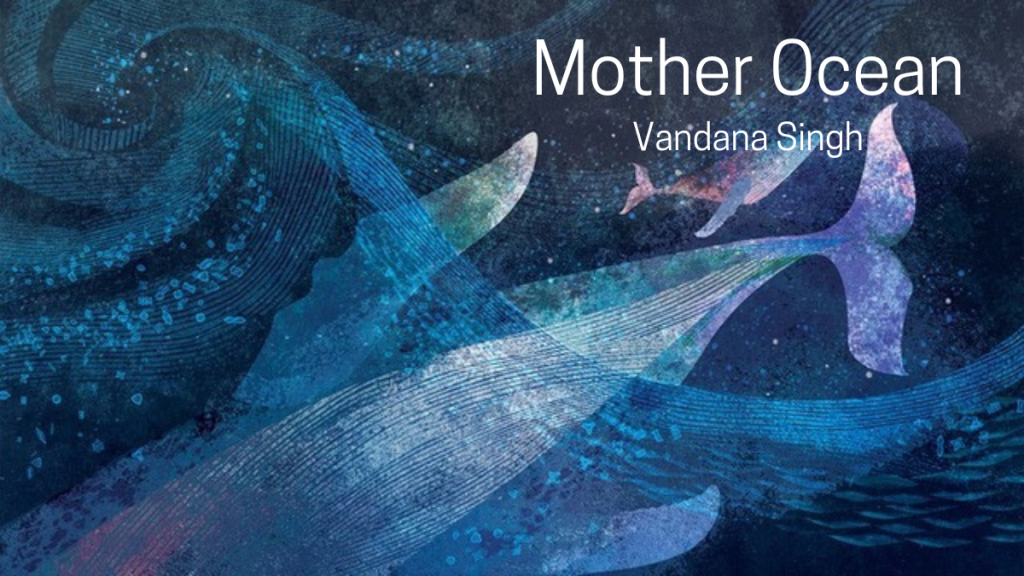
Who Gets to be Published?
For too long, SF was in the hold of a western masculine imagination with Isaac Asimov, Arthur C. Clarke, and Robert Heinlein, considered the big three SF writers, commandeering the genre with heroic stories of valor and courage in the face of planetary threats.
Some western writers made their mark by appropriating India’s mythological bounty to build their own fantasy worlds. Roger Zelazney, winner of multiple Nebula and Hugo awards, recreated the gods of the Hindu pantheon by imagining a post-apocalyptic world ruled by technology. But his depiction and characterization of the Hindu gods lack originality, intricacy and a deeper understanding of who and what they represent both traditionally and in the context of contemporary Indian life.
In India, too, most of the early writers in this genre were men. Hemlal Dutta wrote Rahashya in 1882; Satyajit Ray created the character of Professor Shonku for his “The Diary of the Space Traveler” series in 1961 and Jagdish Chandra Bose, a physicist, botanist, biologist, and archaeologist, wrote about a hair oil taming a cyclone in Runaway Cyclone in 1896.
Begum Rokeya Sakhawat Hossain is credited with being the first woman to publish Sultana’s Dream in 1905, which features a feminist utopia where men are segregated leaving women to have the upper hand.
Hoagland remarked that science fiction changed from being a boy’s club after the western publishing world began to relax some of their genre-defining rules and writers of color, especially women, began to be published in the West. This has transformed the genre beyond the tropes of space travel and encounters with alien beings.
Breaking the western science fiction barrier
It’s been only recently that Indian authors have managed to break the west’s SF publishing barrier.
Fremont, California resident, S. B. Divya published her first novel Machinehood in 2021 under the Simon & Schuster banner; Gautam Bhatia’s debut, The Wall, was published by Harper Collins in 2020, Vandana Singh’s Utopias of the Third Kind (2022) by PM Press and Samit Basu’s The City Inside was released by Macmillan Publishing in 2020, to name a few.
Thanks to cultural stereotyping there was a certain type of book that Indians were expected to write, said Basu, and it was “literary fiction with magic realist sensibility which is broadly cultural explainy.” He said he turned to SF because he thought it would give him more freedom, but to his surprise, he encountered more constraints, especially with western publishers. “When work is traveling the other way it’s like filling a visa form,” he remarked.
But increasingly publishers and writers have come to accept that the Indian reality with its 4,500-year-old culture and its postcolonial evolution creates notions of science and by extension science fiction beyond definitions in the West.
India engenders its own kind of love affair with its 4,000-year-old past and its baffling contradictions and complexities. It’s no wonder that the subcontinent is a breeding ground for SF plots and story ideas. As Menon said in an interview, “Everything is layered, open to interpretations, barnacled with amendments, and spoiled rotten with stories.”
This story was originally published by India Currents as part of a special EMS reporting series exploring how global societies and diaspora communities in the US are navigating the “polycrisis,” a term increasingly used to describe the confluence of extant and emerging global crises. It was supported by a grant from the Omega Resilience Awards.



